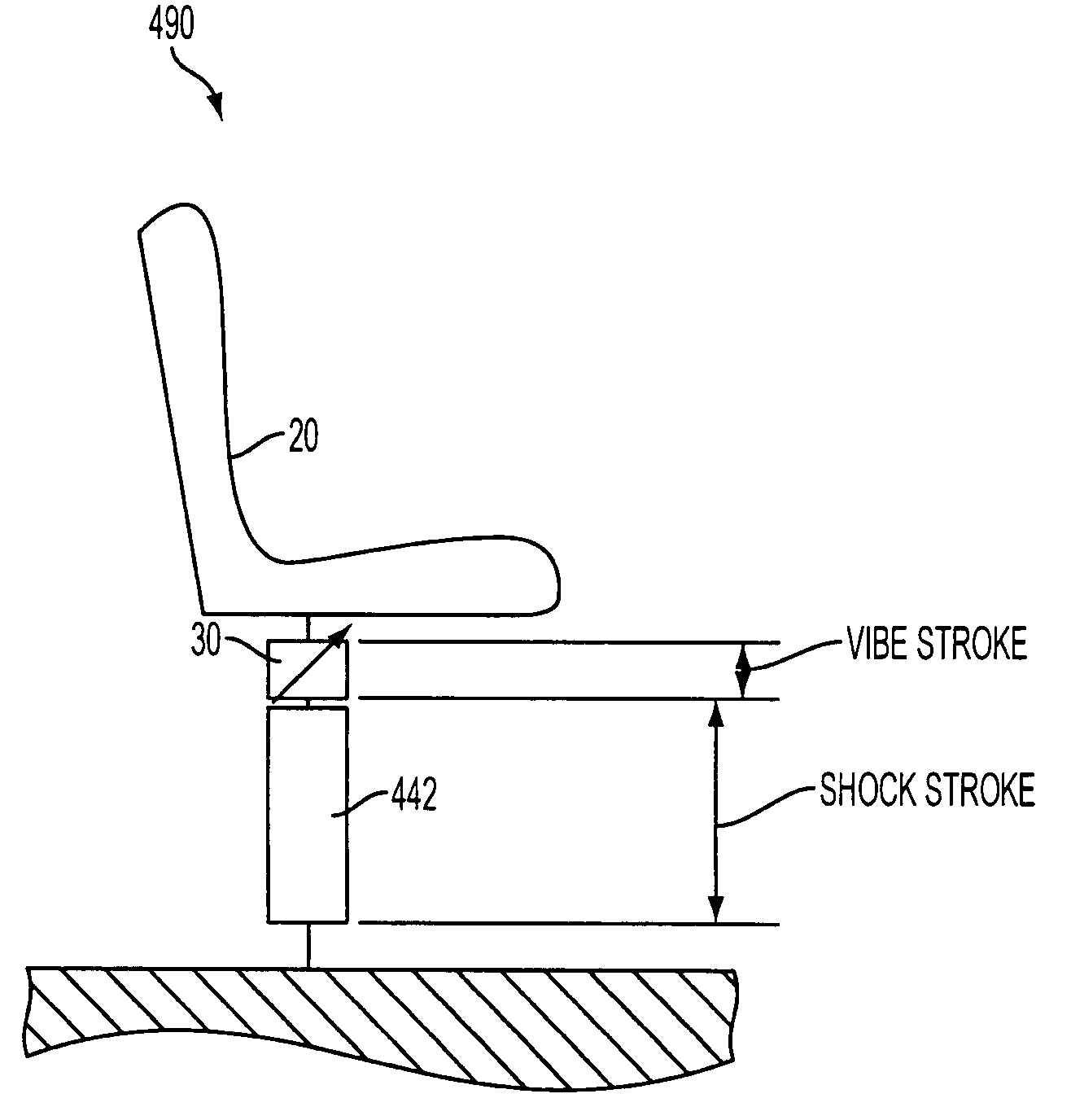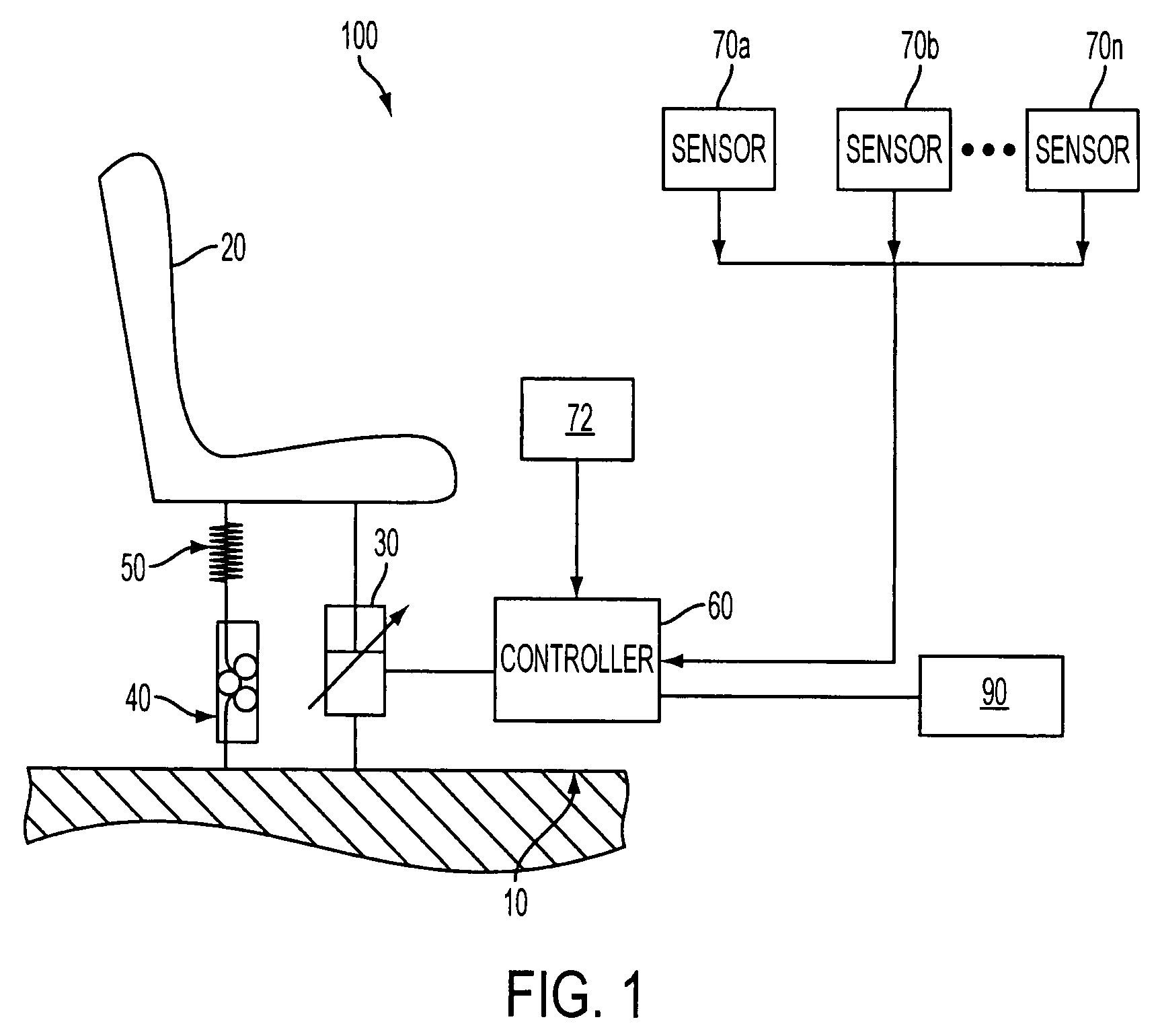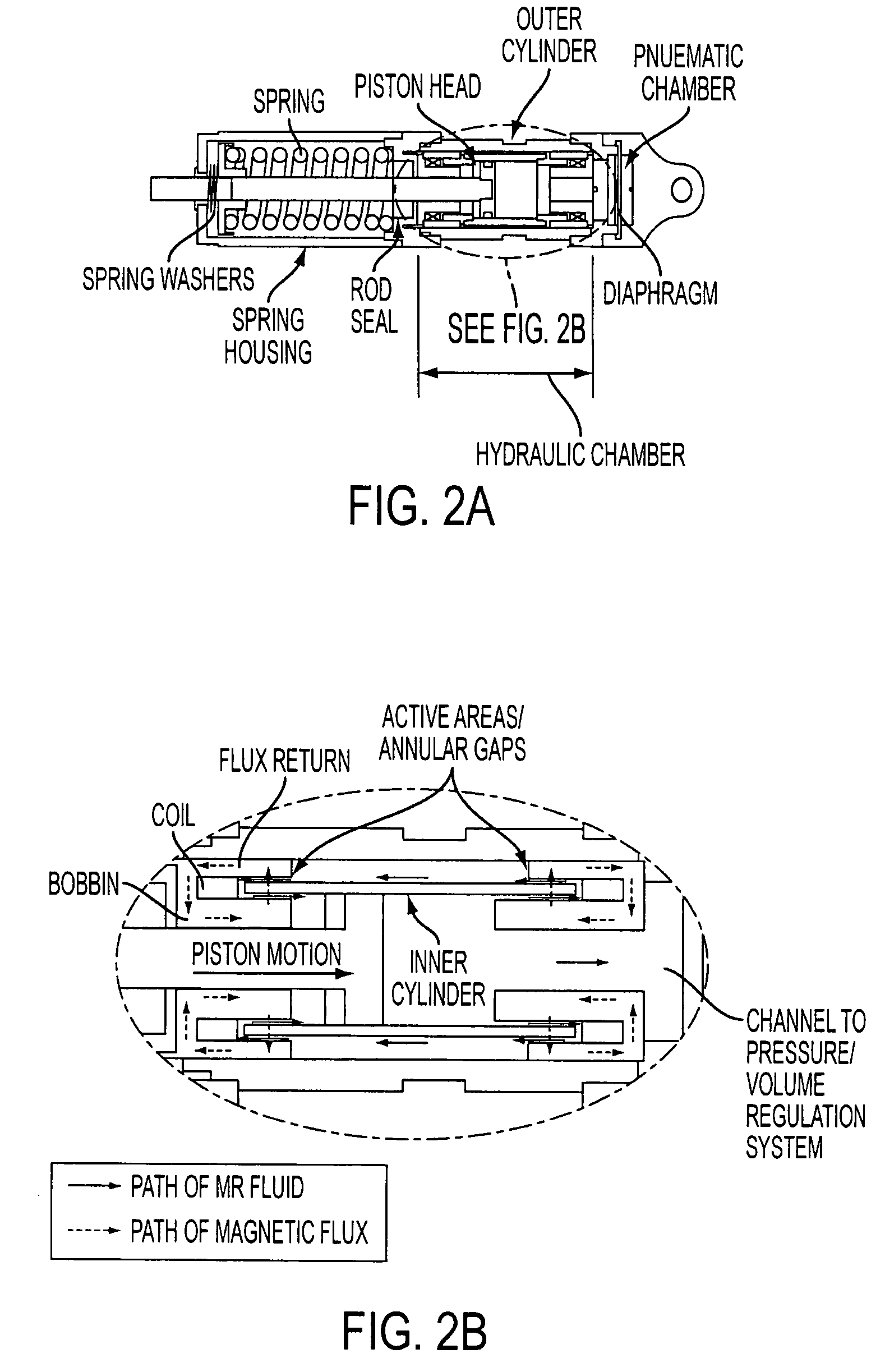Adaptive energy absorption system for a vehicle seat
a technology of energy absorption and vehicle seats, which is applied in the direction of shock absorbers, pedestrian/occupant safety arrangements, elastic dampers, etc., can solve the problems of inability to adjust and stroke energy absorption or stroking profiles as a function of occupant weight, real-time environmental measurements, and inability to adjust and stroke energy absorption profiles. , to achieve the effect of minimizing occupant motion, enhancing comfort, and effectively reducing load into the occupant's body
- Summary
- Abstract
- Description
- Claims
- Application Information
AI Technical Summary
Benefits of technology
Problems solved by technology
Method used
Image
Examples
Embodiment Construction
[0065]An adaptive energy absorption system is disclosed for use with any type of vehicle seats including, but not limited to, aircraft (e.g., rotorcraft, fixed wing, etc.) seats, land vehicle seats (e.g., seats for heavy-duty military, agricultural, and construction vehicles, etc.), marine vehicle seats, or seats for other vehicles that may experience vertical (or other) shock loads, or that may be exposed to varying levels of vibration during normal operating conditions.
[0066]With particular reference to FIG. 1, adaptive energy absorption system 100 is provided for a vehicle seat 20. In one implementation, vehicle seat 20 may comprise an existing vehicle seat, and one or more of the components of system 100 (as disclosed herein) may be retrofit to vehicle seat 20. Alternatively, vehicle seat 20 along with one or more components of system 100 may be provided together as an integral system for installation in a vehicle.
[0067]According to an aspect of the invention, an adaptive energy...
PUM
 Login to View More
Login to View More Abstract
Description
Claims
Application Information
 Login to View More
Login to View More - R&D
- Intellectual Property
- Life Sciences
- Materials
- Tech Scout
- Unparalleled Data Quality
- Higher Quality Content
- 60% Fewer Hallucinations
Browse by: Latest US Patents, China's latest patents, Technical Efficacy Thesaurus, Application Domain, Technology Topic, Popular Technical Reports.
© 2025 PatSnap. All rights reserved.Legal|Privacy policy|Modern Slavery Act Transparency Statement|Sitemap|About US| Contact US: help@patsnap.com



